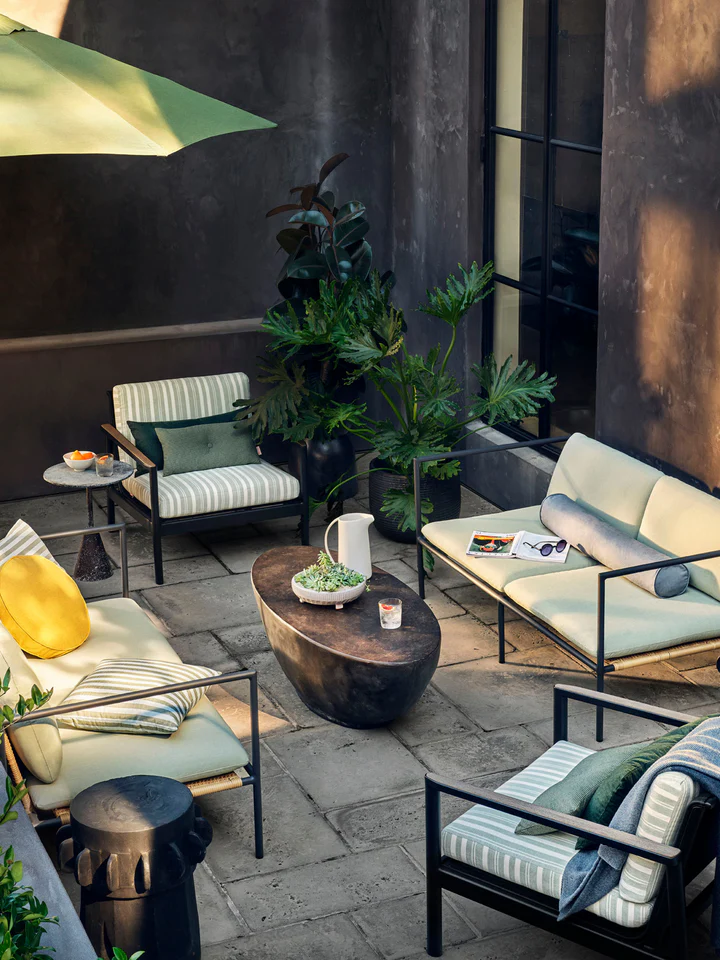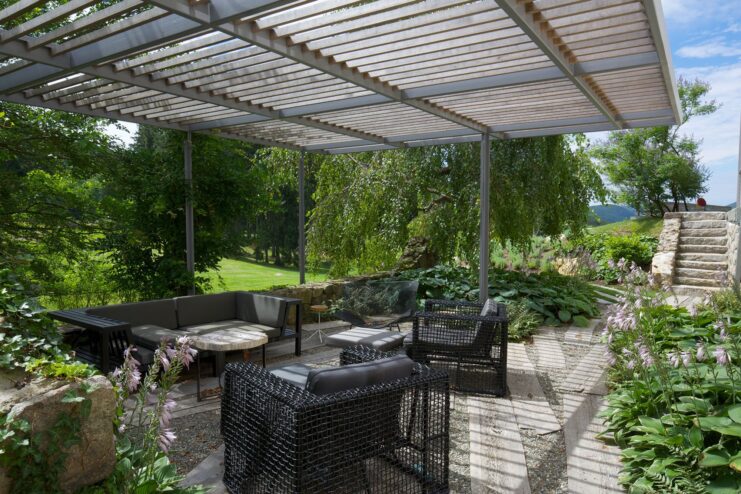Creating an inviting outdoor space doesn’t require a professional designer. It does require smart choices, balance, and awareness of common mistakes. Whether you’re working with a compact patio, a spacious garden, or a sunny terrace, the way you style your furniture, accessories, and layout makes all the difference. Avoid the most common pitfalls and lean into the styling decisions that actually elevate the space. Here’s how to get it right.
Key Highlights
- Choose functional furniture that fits your space and climate.
- Avoid clutter by sticking to a consistent color palette and layout.
- Blend comfort and style with proper outdoor cushions and textiles.
- Don’t forget lighting—it shapes the mood after sunset.
- Keep walkways clear and layouts intentional.
- Know when to invest and where to save.
Start With Purpose, Not With Products
Most people rush into outdoor styling by buying furniture and accessories without thinking long term. That usually leads to cluttered patios or mismatched pieces that don’t work together.
Before anything, ask one question: what do you want to do in this space?
Eating? Lounging? Hosting? Sunbathing? Each function requires a different setup.
A lounge zone needs deep seating and shaded comfort. A dining area needs upright chairs and a sturdy table. If you mix both, use furniture to define zones, not just fill space. That separation adds order and lets your layout breathe.
Invest in Quality Pieces That Can Handle the Outdoors

The sun and rain aren’t kind to cheap furniture. You might love that rattan chair today, but it won’t last more than a season if it wasn’t made for UV or moisture exposure. Choose powder-coated metal, hardwoods like teak, and fabrics built for weather.
Sunbrella chaise lounge cushions are a solid upgrade here. They last longer, resist fading, and hold their shape far better than generic fabric options. If you’re planning a poolside or sun-drenched area, they’re a smart way to mix durability with comfort.
Do Mix Textures, Don’t Overdo the Colors
Textures make an outdoor space feel layered and lived-in. Use a woven rug, wooden stools, ceramic planters, and canvas or linen pillows. Stick to natural tones—white, sand, gray, and terracotta work well as a base.
Add color through plants and a few bold accents. But don’t go wild. More than three dominant colors, and the space starts to feel chaotic. A strong palette creates visual calm.
If you want bold tones, ground them with neutrals. A navy cushion works well if it’s paired with beige furniture and off-white planters.
Avoid Furniture That’s Too Big—or Too Small
Proportions matter more outdoors than inside. A bulky sofa in a tiny patio looks awkward. But tiny chairs floating in a big yard feel just as wrong.
Scale furniture to your space:
- Use compact sectionals or modular pieces for small balconies.
- Stick with benches and longer tables in wide gardens.
- Avoid high-backed or overly heavy furniture in open terraces—they block sightlines and ruin airflow.
Measure the area. Leave at least 90 cm of walking space around dining sets and 50 cm between furniture pieces. It feels better and functions better.
Lighting Should Work, Not Just Look Pretty

Good outdoor lighting isn’t just for aesthetics. It keeps the space usable and safe at night. Don’t make the mistake of relying on a few weak solar lights or string bulbs alone.
Layer your lighting like this:
- Use task lighting near cooking or dining areas.
- Add ambient lighting with soft wall fixtures or lanterns.
- Place accent lighting around plants or pathways.
Warm light (2700K–3000K) works best for mood. Avoid overly bright LEDs—they can make the space feel sterile and harsh.
Keep It Flexible, But Not Random
Don’t force a rigid setup. You’ll use the space differently across seasons, so your furniture should allow flexibility. Opt for lightweight chairs, movable fire pits, or foldable tables where possible.
But don’t go too casual. Random chairs scattered everywhere signal disorder. Make sure every piece has a purpose and place.
Even small details—like placing a side table between two chairs—show intention. It’s about balance, not symmetry.
Add Greenery, But Think Long Term

Potted plants add softness and life. They cool down hard materials like concrete and wood. But be strategic.
Use low-maintenance plants suited to your local climate. That way, you won’t constantly replace them. Group plants in odd numbers (3 or 5) and use different pot heights to create movement.
Avoid placing pots directly in walking paths or tight corners—they become trip hazards fast. Also, don’t let vines or oversized foliage crowd furniture. Trim often and make room for function.
Keep Décor Seasonal and Swappable
Some items are permanent—tables, built-in seating, hard flooring. Others should shift with the seasons.
Use removable textiles like throws, pillow covers, and rugs to bring in warmth in fall or lightness in spring. Rotate lanterns or table decor by season. That refreshes the space without a big budget or redesign.
Avoid buying too many permanent decorative pieces. Instead, focus on quality items that you can rotate out or replace once they fade or wear.
Don’t Ignore Storage or Weather Protection
An outdoor space without any storage becomes high-maintenance fast. Cushions fade, tools rust, and lanterns break when left out year-round.
Use storage benches or a weather-resistant cabinet to store soft goods. If space allows, get a cushion box to keep things clean and dry between uses.
Also, get a reliable cover for furniture or umbrellas. That one step will double the lifespan of most outdoor items.
Final Touches That Make a Space Feel Complete
Sometimes, the final 10% makes all the difference. Think of how hotels and resorts style their lounges. It’s not just about what’s there—it’s about how it feels.
- Use trays or bowls for collecting small items.
- Add candles or scent diffusers for evenings.
- Hang one large piece of outdoor-safe art or a mirror.
- Don’t forget sound—a small Bluetooth speaker or wind chimes go a long way.
Just one or two of these touches can turn a plain setup into a space you look forward to using daily.
Conclusion

Outdoor styling doesn’t need to be complicated. You just need clear intent, practical choices, and a good eye for layout. Avoid the common traps—random purchases, poor proportions, weak materials—and focus on comfort, cohesion, and function. With smart cushions, lighting, and greenery, your outdoor space can match the comfort of your indoor rooms. It can become your favorite place to relax, host, and unwind. Let it reflect how you live—not just how you decorate.
